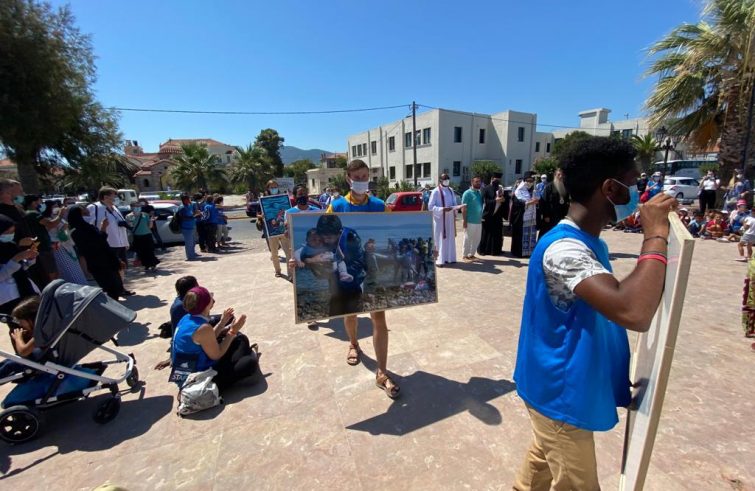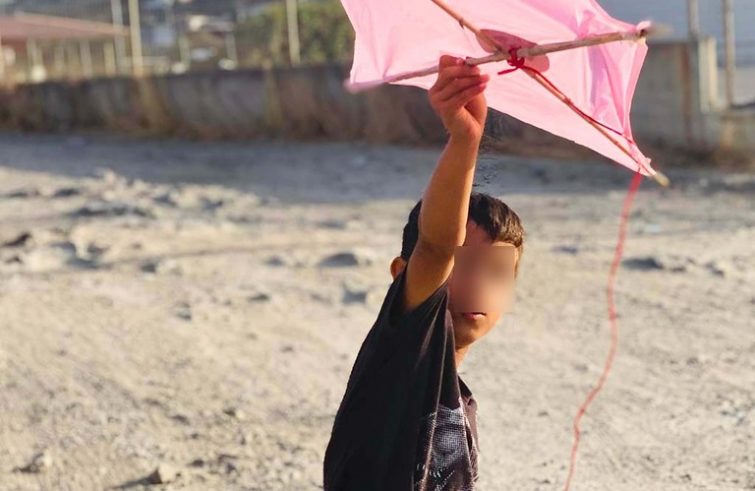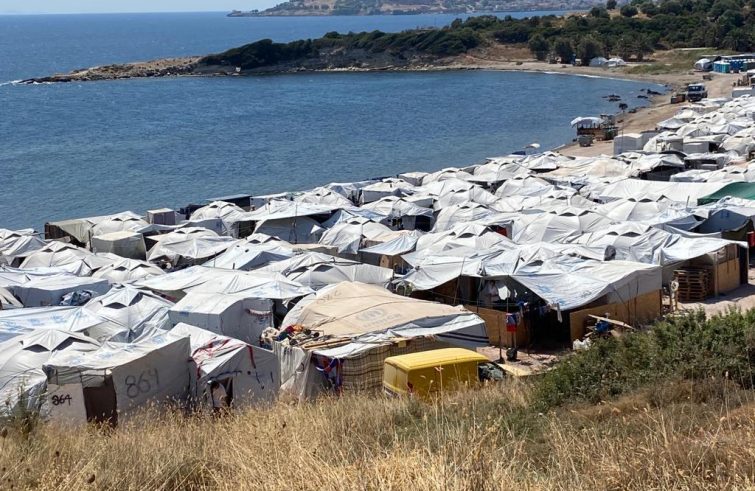
“We all hope that Pope Francis will make an unexpected gesture like he did last time, allowing some refugees from Lesbos to board his plane. But we don’t know if this will happen. However, every visit by the Pope has a symbolic meaning. We hope it will encourage the relocation of asylum seekers to other European countries. People must not have to endure three years of suffering in the camp. The island should only be a place of transit.” Monica Attias, in charge of the humanitarian corridors from Greece and Afghanistan for the Community of Sant’Egidio, told SIR. As many as 46 refugees have arrived from Lesbos on November 30 through the humanitarian corridors. The Pope will travel to the island of Lesbos on Sunday December 5 – in the framework of the apostolic visit to Cyprus and Greece, December 2 to 6 – where he will meet around fifty asylum seekers, mostly Africans and Afghan Catholics, sheltered in the Mavrovouni refugee camp (known as Kara Tepe), set up after the fire and subsequent closure of the notorious Moria camp, dubbed “migrants’ inferno.” It will be a brief meeting of about an hour, with the testimonies of migrants and with representatives of the Mytilene parish (a town near the refugee camp), actively involved in relief and solidarity efforts.
The island of Lesvos has greatly changed over the last few years, since most of the migrants, who arrived in makeshift vessels from Turkey, were relocated by Greek authorities to camps on the mainland – with EU funding. “Lesbos has ceased to be an emergency, but it remains a land of first landings and drowning,” Attias remarks. “The problem is that the refugees are left here for months and years waiting for the necessary formalities to be processed in order to file for asylum.
The new camp in Mavrovouni (or Kara Tepe) currently houses about 1,200 people. There are container homes and tents with a view of the sea, but instead of this being beneficial, it exposes them to winter cold and bad weather. Electricity is rationed. Following the handover of the camp’s administration from UNHCR (United Nations High Commissioner for Refugees) to the Greek government, pocket money is not being distributed at the moment. There is little food and it is poorly prepared. Violence inside the camp and tensions caused by local far-right groups have decreased because the camp is fenced off and controlled by the Greek army. But people are not allowed out on Saturdays and Sundays. Occasional short circuits result in fires, while women, children and vulnerable people are exposed to constant danger. “Women don’t use public toilets at night time for fear of being raped. They are compelled to urinate in bottles. The situation is promiscuous and precarious,” she says. Not counting the fact that “only 40 children have the possibility of attending school on a regular basis.”
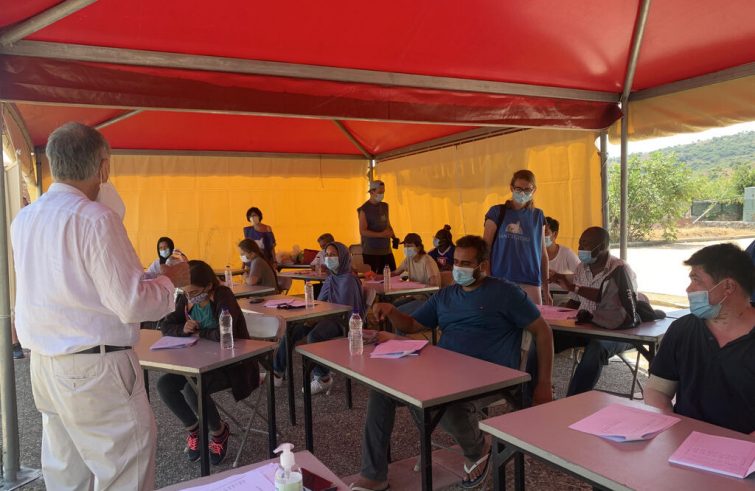 Others have to settle for Greek or English language courses provided by NGO volunteers or by the Sant’Egidio Summer School every summer.
Others have to settle for Greek or English language courses provided by NGO volunteers or by the Sant’Egidio Summer School every summer.
One serious issue is that “many people in wheelchairs are still sleeping in tents in one area of the camp.”
In addition, a number of families live outside the camp, in derelict houses or flats rented from NGOs or churches. Altogether, about 500 people are living in Mytilene and other villages: “Most of them are families, since single persons manage to continue their journey alone, passing through the Balkan route.”
The work of volunteers, Churches and NGOs. Together with other NGOs, the Community of Sant’Egidio provides food, assistance, legal support, assists unaccompanied minors, rents flats for vulnerable families, in collaboration with the Church and local civil society. Last summer they handed out meals to both migrants and the poor in Mytilene, to overcome conflicts and inequalities. Médecins Sans Frontières did the same, providing free treatment to all. “A local network is in place to provide shelter to refugees,” Attias said. “Good relations have been created. The people of Lesbos understand that we should not be afraid of migrants and that their presence boosts the economy.”
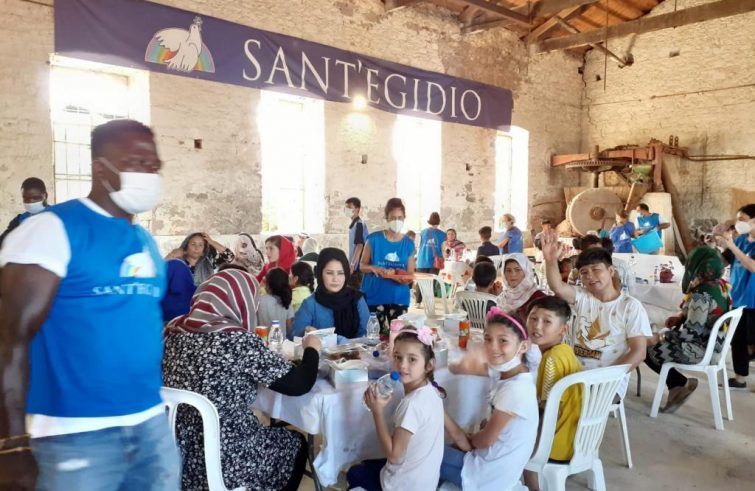 Greece’s (and Europe’s) rejection. At the moment, asylum seekers living in overcrowded refugees camps in mainland Greece, container homes and plastic houses, in isolated areas one or two hours’ distance from Athens or other urban areas, represent the greatest concern. People camping in squares across Athens are being evacuated by the police. “Unfortunately, Greece has announced that people from Afghanistan, Syria, Pakistan, Bangladesh and Somalia must return to Turkey, considered to be a safe country. These repatriations are voluntary, not compulsory, but these people want to reach Europe.
Greece’s (and Europe’s) rejection. At the moment, asylum seekers living in overcrowded refugees camps in mainland Greece, container homes and plastic houses, in isolated areas one or two hours’ distance from Athens or other urban areas, represent the greatest concern. People camping in squares across Athens are being evacuated by the police. “Unfortunately, Greece has announced that people from Afghanistan, Syria, Pakistan, Bangladesh and Somalia must return to Turkey, considered to be a safe country. These repatriations are voluntary, not compulsory, but these people want to reach Europe.
How can anyone say that Syrians and Afghans have no right to asylum?
After having been denied asylum, they remain in Greece illegally, they cannot work and live in limbo with no future prospect.” Attias reiterates that the priority, in this period, is “integration into Greek society or establishing quotas for persons listed for relocation, including through humanitarian corridors and sponsorship.”

